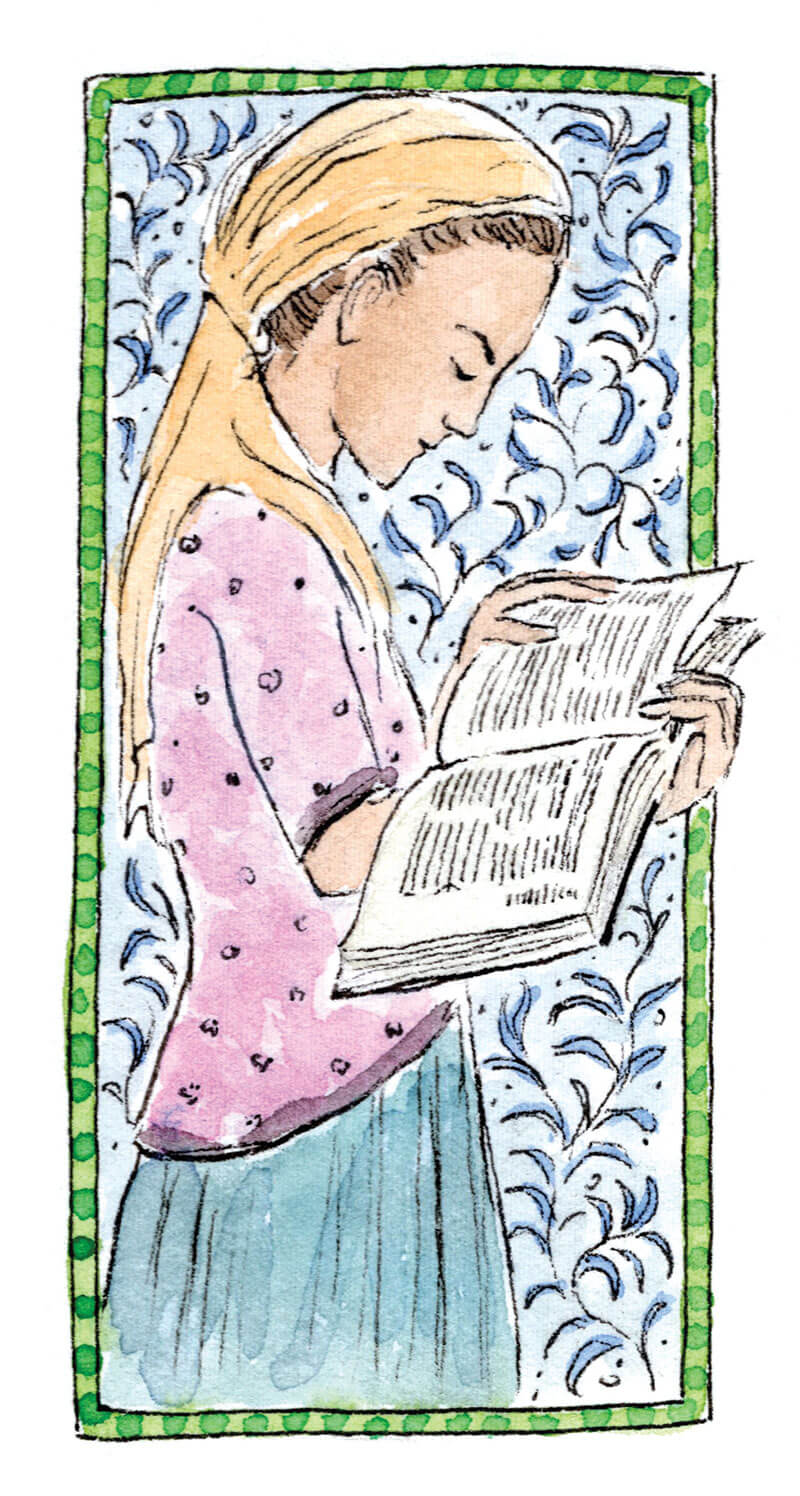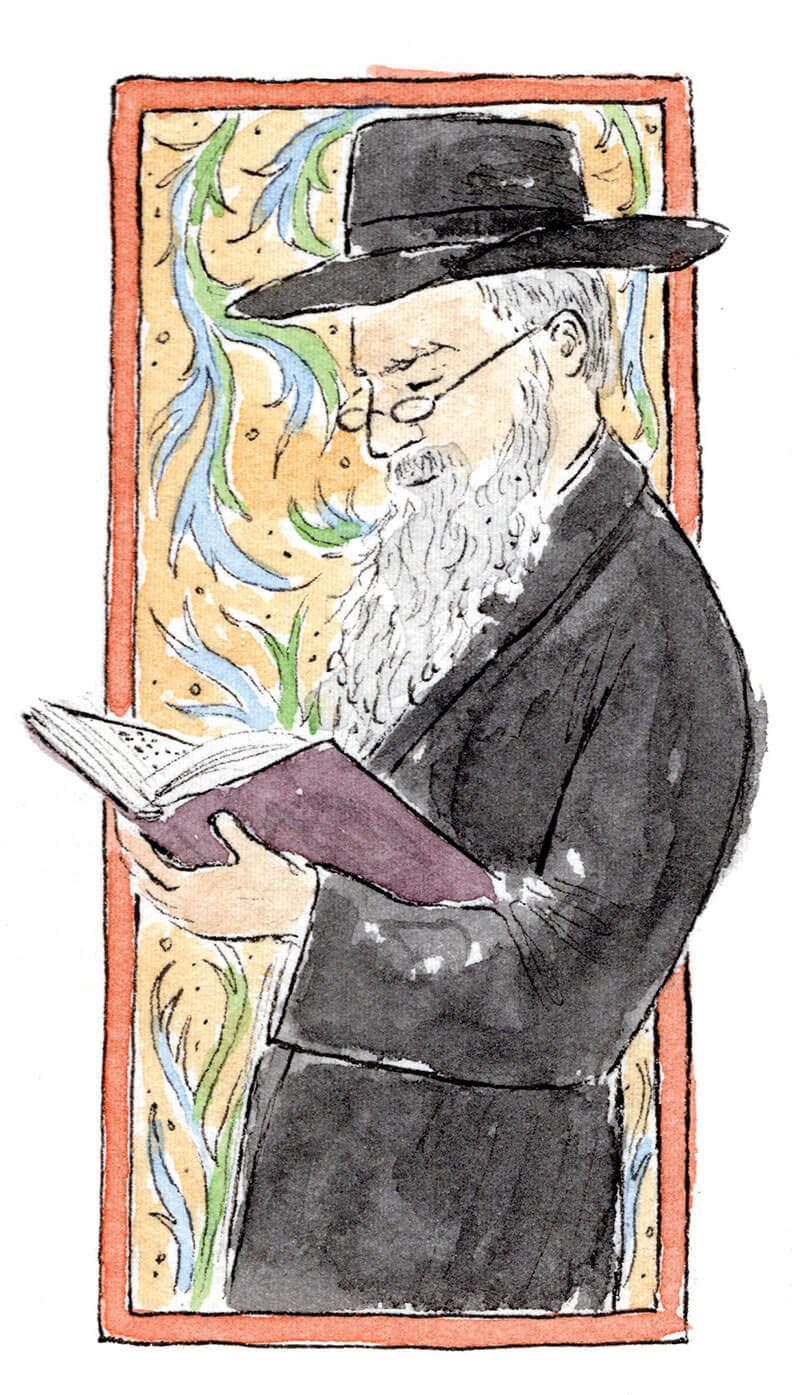In the 1,500 years or so since it was compiled, no one has ever accused the Talmud of being a page-turner.
It’s not hard to understand why. The very first page finds the rabbis arguing about the precise timing for reciting the Shema prayer — not exactly the sort of stuff that keeps readers glued to their chairs. Skip a few pages ahead, and you’ll encounter elaborate quarrels on anything from whether or not prayer is better than good deeds to whether or not you may use an elephant as a wall for your sukkah.
Almost always, these heated conversations are presented in shorthand, calling on the reader to fill in a lot of blanks. They are also often delivered without resolution, which sometimes makes reading the Talmud like watching a terrific ball game without ever knowing who won. It’s also sprawling, with 63 different volumes, called tractates, clocking in at 2,711 supersize pages — in Aramaic more often than Hebrew. And even if you choose to ignore the ample commentary arranged in neat blocks on the margins of each page—making the Talmud, as the writer Jonathan Rosen so astutely observed, the precursor to the internet’s architecture of hyperlinks—it’s easy to get lost in the Talmud’s textual thicket, with legalistic inquiries, fantastical tales, philosophical meditations, and personal interactions all bleeding into one another with no apparent order or borders.
And yet, to the extent that the Talmud can even be called a book—it’s more accurately described, Rosen wrote, as “a drift net for catching God”—it’s a truly magnificent one. Because in touching on virtually every human experience, from passing wind to losing a loved one, the Talmud is, arguably, humanity’s first, greatest, and still most astonishing self-help book.

The self-help category, alas, has suffered some wear and tear lately. Walk into the self-help section of your local bookstore, and you’re likely to stumble on entries such as The Secret, which, in just 198 pages, promises to deliver all the wisdom you need to make millions, lose weight, win friends, influence people, and much more. But the desire for self-improvement, hallelujah, transcends twaddle; it wouldn’t be pushing it too far to say that we come to all great art expecting a spoonful of self-help, something to assist us as we try to claw our way above our imperfections in the hope of catching a better glimpse of truth and beauty. And no other book delivers on this aspiration like the Talmud.
To understand why, you first have to know a thing or two about that great book, and that, no surprise, is complicated. Why? For starters, there are not one but two Talmuds, one compiled in Bavel, or Jewish Babylonia, in modern-day Iraq, and the other in the Land of Israel, mainly in Galilee. Hence, the Babylonian and the Palestinian or Jerusalem Talmud. And each of them contains mostly the Gemara and two famous commentaries, one by the 11th-century French sage Rashi, the other by the Tosafists, French and German rabbis of the four centuries following. The Gemara itself is a collection of rabbinic commentaries on the Mishnah, a separate compendium of Jewish laws and traditions passed down orally for centuries and redacted at some point in the third century c.e. The Talmud then, is an enormous project, and the story of its creation is as inspiring as it is timely, because the Talmud, really, is a guide for a troubled people living in troubled times — any troubled times, as indicated by the references, festooned around the main texts, to well over a thousand years of later commentary.
The story of the Talmud’s creation goes something like this: In 70 c.e., after the Romans burned down the Temple in Jerusalem, Jews found themselves on the brink of a second extinction event. For centuries after returning from their first extinction event, when Cyrus permitted them to return from Babylonian exile 650 years earlier, their religion had centered around marching to God’s earthly home and offering pilgrimages there. With that sacred sanctuary now gone, no one was quite sure whether or how Judaism could survive.
Enter the rabbis. Our ancestors had two insights up their collective sleeve. Together, they did not merely save Judaism. They gave it the tools to continue to flourish and inspire for millennia. The first was to take all the religion’s practices and put them in this book. We may not be able to worship in the Temple, went the logic, but we can still read detailed accounts of how the Temple ran and operated, and by reading transport the religious experience from action to contemplation.
That alone should delight anyone who was ever so lost in a story that he imagined it was real, or who’d felt she knew Narnia or Middle Earth, say, as well as her own block. Of course, the Talmud is more than just an account of Temple practice. It sets out a way of life — really, the way of life — focused on Torah and Jewish law, rather than Temple worship or political sovereignty. But in setting out the laws of the Torah and the practices we derive from it, the rabbis had a second insight, this one even more profound. If all they had done was write down a bunch of laws, readers would eventually have lost interest. New generations would argue that the old truths no longer applied, that the times, they were a-changin’, that a fresh coat of paint was needed to restore the façade of that old-time religion. As anyone who was ever a teenager can confirm, it’s human nature to think we know better than our elders, and to call this hubris progress. Instead of merely recording divine commandments, then, the rabbis who compiled the Talmud wrote down their all-too-human disagreements, too. Open any page, and you’ll find yourself right there with them, invited to jump straight into a family argument that’s been going on for nearly two millennia.
What’s the argument about? Everything, really, which is what gives the Talmud its immense appeal, allowing anyone and everyone to find something in it that feels immediate and relevant. Take, for example, page 50 of tractate Nazir. The rabbis kick things off by explaining that the Nazir, a person who had taken a vow of purity, is rendered impure if he or she comes into contact with a handful of dust that covers a corpse.
Which, naturally, raises a basic question: What, exactly, is a handful? Is it a precise unit of measurement or an approximation? The rabbis soon alight on a profound resolution. The answer, they decide, is relative to each of us, as one person’s hand is rarely the same size as another’s. They’re speaking literally but also metaphorically, reminding us that we all have different sensibilities and therefore different susceptibilities to all things impure. For some, it takes but a nip of gin for vice to come calling, while others can drink all night and remain morally and physically upright. Some of us need but the gentlest temptation to lie, cheat, or steal, while some of us would rather suffer than transgress. And if we understand that about ourselves, we can set a course for self-improvement based not on some unobtainable, unachievable, abstract ideal but on our own individual ethical capacity, taking small and customized steps toward being better every day.
These subtle but startling lessons are everywhere in the Talmud, and if the book did nothing but deliver such insights into human nature and practical advice for learning and growing, it would have been enough. But the Talmud delivers two more treats that should send us all to the local Judaica store in search of a copy.

The first is the Aggadah, or the parts of the Talmud that don’t deal directly with halakhah, or Jewish law. Often, these parts are little morality tales: self-contained fables designed to educate and move the reader, such as the tale (arguably the Talmud’s most famous) about the rabbis arguing over a certain legalistic matter. Everyone agrees on a certain answer except for Rabbi Eliezer, who, frustrated, says that if he’s right, he’d like to see a nearby tree uproot itself and walk a short distance down the road. The tree obliges, but the other rabbis aren’t impressed by this supernatural confirmation. Trees, they say dryly, don’t get to decide halakhah. Doubling down, Eliezer commands the river to reverse the direction of its flow, and this miracle, too, soon occurs. But the other rabbis are still convinced that Eliezer is wrong, and so, flustered, Eliezer asks God Himself to intervene. Immediately, a heavenly voice makes itself heard and says that Rabbi Eliezer is correct. “Excuse me,” respond the other rabbis, “but this is not up to heaven.” God may give us laws, they explain, but here on earth, it’s up to us humans, not the Almighty, to interpret and enforce them. God, the Talmud reports, is mightily pleased with this reply, saying, “My sons have bested Me.”
Such stories are empowering, but the Talmud’s wisdom runs yet deeper than this collection of edifying tales. The second treat is that the Talmud’s structure alone offers revelations. For example, the section of the Talmud dealing with family law opens with levirate marriage, which obligates a man, under certain conditions, to marry the widow of his deceased brother so that she’s not left alone and destitute.
Why start the discussion there? Why not follow the natural order of things, and talk first of love and marriage, of pregnancy and child-rearing, and of all the other beautiful steps that two people take as they start and build their family? Because families, the rabbis understood, are complicated things, and our fealties are best tested not when we’re content and life is peachy but when tragedy strikes. The man who steps up to wed his dead brother’s widow is showing her, by this virtuous deed, that he truly cares for her and that she’s truly part of the family even though she joined it by marriage, not birth. Hardship is the best crucible for the most enduring bonds. Simply by placing the discussion of what happens to a family when times grow tough before all other considerations of family life, the Talmud is teaching us to rethink everything we thought we knew about our own affinities and priorities.
Should you, then, take the Talmud to the beach this summer? I wouldn’t recommend it. But you could take some time to read just one page of Talmud a day. The practice, known as Daf Yomi, is shared by hundreds of thousands of Jews around the world, and anyone with an internet connection can join. You may discover the masterpiece you never knew you needed. Great works of art tell us what to think about; the Talmud teaches us how to think, flooding us with examples and hypotheticals that force us to examine our definitions, sharpen our categories, and question every assumption we have about living in this world and yearning for the next. We could hardly ask more of a book.

